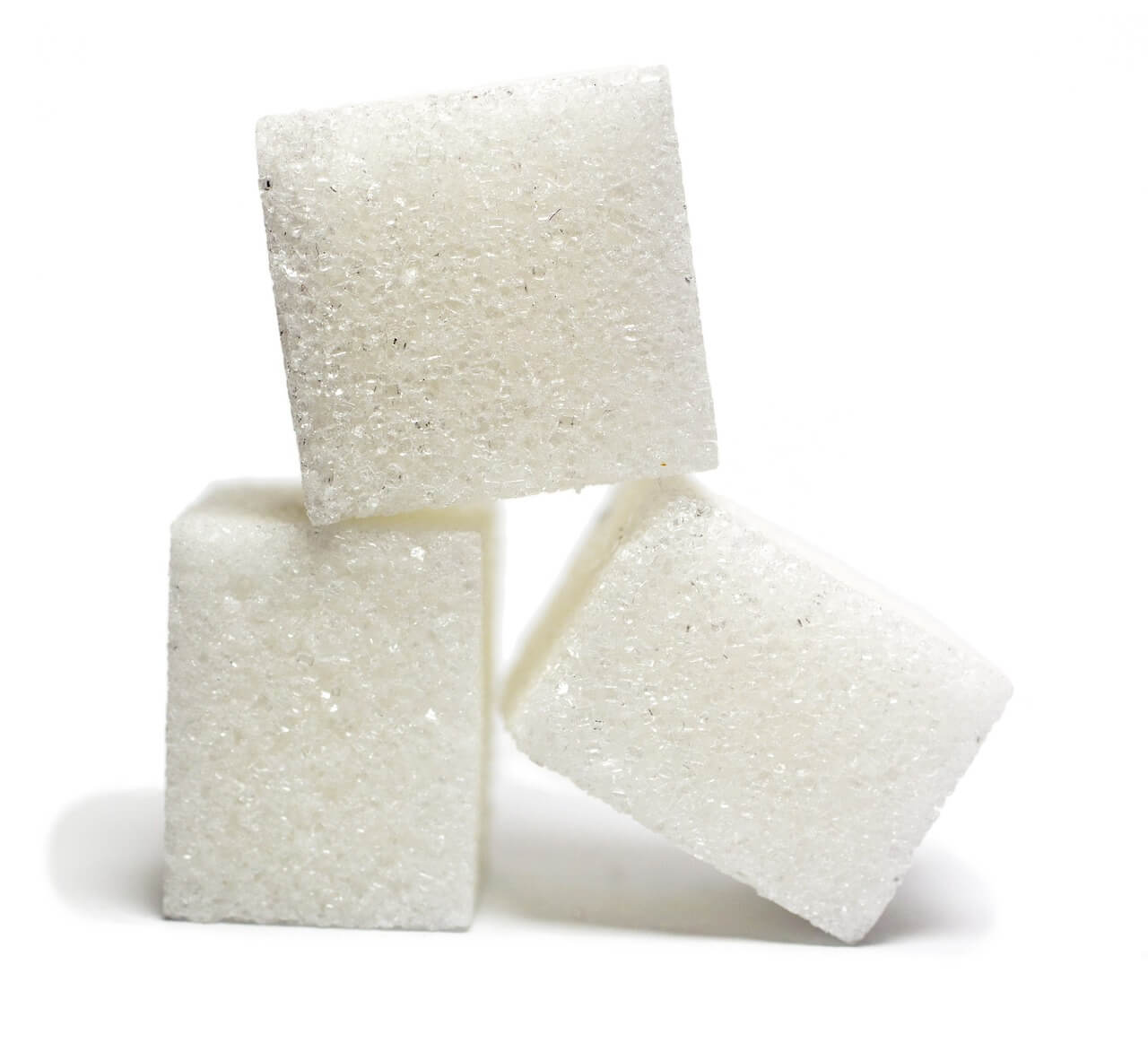Caramelized sugar is a culinary term referring to sugar that has been heated to the point of melting and undergoing a chemical transformation, resulting in a rich, amber-colored liquid with a distinct flavor profile. This process, known as caramelization, involves the breakdown of sugar molecules through heat, leading to the formation of numerous complex compounds responsible for the characteristic taste and color of caramelized sugar.
In simpler terms, caramelization occurs when granulated sugar is exposed to high temperatures, causing it to liquefy, darken, and develop a rich caramel flavor. The process begins with the application of heat, typically in the form of direct heat from a stove or oven. As the sugar heats up, it begins to melt, eventually reaching a point where it undergoes further chemical reactions, resulting in the caramelization process.

During caramelization, the sugar molecules undergo a series of complex chemical reactions, breaking down into smaller molecules and forming new compounds responsible for the distinct taste and aroma of caramel. These compounds impart a rich, sweet flavor with subtle notes of toffee, butterscotch, and vanilla, depending on the degree of caramelization and the specific sugars involved.
The caramelization process can vary in intensity and duration, leading to different shades of caramelization and flavor profiles. Shorter cooking times result in lighter-colored caramel with a milder flavor, while longer cooking times produce darker caramel with a more intense, bittersweet taste.
Overall, caramelized sugar adds depth and complexity to a wide range of culinary creations, from desserts like caramel sauce and crème to savory dishes like caramelized onions and glazed meats. Understanding the definition and process of caramelization is essential for mastering the art of caramelized sugar in cooking and appreciating its unique culinary contributions.
Contents
- 1 Understanding Acrylamide
- 2 What is Acrylamide?
- 3 Risks Associated with Acrylamide
- 4 Factors Affecting Acrylamide Formation
- 5 Health Implications of Acrylamide:
- 6 Comparison: Caramelized vs. Non-Caramelized Sugar
- 7 Impact on Health: Comparison Between Caramelized and Non-Caramelized Sugar
- 8 Debunking Misconceptions
- 9 Practical Considerations
- 10 Alternatives to Caramelization
- 11 Conclusion
- 12 FAQs
Understanding Acrylamide
What is Acrylamide?
Acrylamide is a chemical compound found in cooked foods, particularly carbohydrate-rich ones like potatoes, grains, and coffee beans. It forms naturally when foods are cooked at high temperatures, resulting from a reaction between sugars and asparagine. Acrylamide has been classified as a probable carcinogen by organizations like the International Agency for Research on Cancer, and its potential carcinogenic effects include DNA interference and harmful mutations. It has also been linked to neurotoxicity and reproductive issues in animals. Understanding acrylamide sources and conditions is crucial for maintaining a healthy diet.
Acrylamide is a chemical compound that forms naturally in certain foods during high-temperature cooking processes, such as frying, baking, or roasting. It is produced through a reaction between sugars and an amino acid called asparagine, particularly in carbohydrate-rich foods like potatoes, grains, and yes, sugar.
Risks Associated with Acrylamide
Research has linked acrylamide to potential health risks, including its classification as a probable carcinogen by organizations such as the International Agency for Research on Cancer (IARC). Chronic exposure to high levels of acrylamide has been associated with an increased risk of certain cancers, neurotoxicity, and reproductive issues in animal studies.
Acrylamide, a chemical found in certain foods, has raised concerns about its potential health risks. It has been classified as a probable carcinogen by organizations like the International Agency for Research on Cancer, suggesting a possible link to increased cancer risk. High levels of acrylamide exposure have been linked to neurotoxic effects, including damage to the nervous system and cognitive deficits. Animal studies have also shown acrylamide exposure can impact reproductive health, including reduced fertility and developmental abnormalities. Other health issues include oxidative stress and inflammation, contributing to cardiovascular disease, diabetes, and chronic conditions.
Factors Affecting Acrylamide Formation
Cooking Time
The longer food is exposed to high temperatures, the more acrylamide is likely to form. Extended cooking times, especially in processes like deep-frying or baking at high temperatures, can significantly increase acrylamide levels in foods .Acrylamide formation in food is influenced by cooking time, which is the duration of exposure to high temperatures.
The Maillard reaction, which occurs during frying, baking, or roasting, increases the likelihood of acrylamide formation in the outer layers of food. Longer cooking times at higher temperatures increase the risk of acrylamide formation. Therefore, it is crucial to be mindful of cooking times and adopt cooking methods that minimize exposure to high temperatures to reduce acrylamide formation in cooked foods.
Temperature
The temperature at which foods are cooked plays a crucial role in acrylamide formation. Higher temperatures lead to more rapid chemical reactions, increasing the likelihood of acrylamide formation. temperature is a key factor in the formation of acrylamide in food during cooking processes. The Maillard reaction, which occurs at higher temperatures,
Leads to browning and flavor development in cooked foods. High temperatures, such as frying or baking starchy foods, increase acrylamide formation. To reduce acrylamide formation, cooking methods with lower temperatures or shorter cooking times, such as steaming or boiling, can be employed. Balancing culinary preferences with food safety and health considerations can help individuals make informed choices when preparing and cooking foods.

Sugar Source
The type of sugar used in cooking can influence acrylamide levels. Different sugars have varying compositions and react differently under heat, affecting the formation of acrylamide. The type of sugar used in cooking significantly influences the formation of acrylamide in food. Different sugars have varying compositions and reactions under heat, impacting the extent of acrylamide formation.
Reducing sugars, like glucose and fructose, promote the Maillard reaction more readily than non-reducing sugars. Foods with higher sugar content, particularly those with a high ratio of reducing sugars to proteins, are more likely to undergo extensive Maillard reactions and produce higher levels of acrylamide. Understanding the role of different sugars in acrylamide formation and choosing cooking methods that minimize high temperature exposure can reduce the risk of acrylamide formation in diets.
Health Implications of Acrylamide:
Research Findings
Research on the health effects of acrylamide consumption has yielded valuable insights into its potential impact on human health. While the evidence is still evolving, several key findings have emerged regarding the health implications of acrylamide exposure;
Acrylamide, a chemical found in animal and human studies, has been linked to increased cancer risk, neurotoxicity, reproductive health issues, and oxidative stress and inflammation. The International Agency for Research on Cancer classifies acrylamide as a probable carcinogen, but the overall risk to human health remains uncertain. High levels of acrylamide exposure have been associated with neurotoxic effects, including reduced fertility and developmental abnormalities in offspring. Further research is needed to establish a definitive causal relationship between acrylamide exposure and cancer risk.
Overall, while research on the health effects of acrylamide is ongoing, current evidence suggests that acrylamide exposure may pose potential risks to human health, including an increased risk of cancer, neurotoxicity, and reproductive issues. However, the overall risk to human health and the extent of these effects remain uncertain, and more research is needed to fully understand the health implications of acrylamide consumption.
Regulatory Guidelines
In response to concerns about acrylamide, regulatory agencies have implemented measures to mitigate exposure. These include setting maximum limits for acrylamide in certain foods and providing guidelines for food manufacturers to reduce acrylamide formation during production processes.
Regulatory agencies worldwide have implemented guidelines to mitigate the health risks associated with acrylamide consumption. These guidelines set maximum limits for acrylamide levels in certain food products, based on scientific assessments. They also conduct risk assessments to evaluate potential health risks. Regulatory agencies provide guidance to food manufacturers on reducing acrylamide formation during food processing and cooking, such as adjusting cooking temperatures and using alternative ingredients. They also raise consumer awareness about acrylamide exposure through public health campaigns, educational materials, and labeling requirements. The aim is to balance public health concerns with practical realities of food production and consumption.
Comparison: Caramelized vs. Non-Caramelized Sugar
Nutritional Content
Caramelized sugar undergoes chemical changes during the caramelization process, resulting in the formation of new compounds that contribute to its distinct flavor and color. While the nutritional composition of caramelized sugar may differ slightly from non-caramelized sugar due to these transformations, the overall caloric content and basic composition remain similar .Caramelized and non-caramelized sugars have slightly different nutritional content due to chemical transformations during the caramelization process.
Browning sugar through a process called caramelization is used a lot in cooking because it produces a brown hue and a sweet, nutty flavor. Three sets of polymers—caramelans (C24H36O18), caramelens (C36H50O25), and caramelins (C125H188O80)—are responsible for the brown hues.

Impact on Health: Comparison Between Caramelized and Non-Caramelized Sugar
When considering the impact on health, it’s essential to compare the effects of caramelized sugar with non-caramelized sugar. While both forms of sugar share similar basic nutritional profiles, there are some differences in their potential health implications .
Caramelized sugar has a slightly higher glycemic index, potentially causing rapid blood sugar increase, potentially affecting diabetes patients. It also contributes to the formation of acrylamide, a compound linked to cancer and neurotoxicity. While both types of sugar can contribute to acrylamide formation, caramelized sugar may have higher levels due to longer cooking time. Caramelization may also produce antioxidant compounds, but their impact on overall health is unclear. Its distinct flavor can enhance sensory experiences but also contribute to excessive sugar consumption.
Overall, while caramelized sugar may offer unique sensory characteristics, it’s essential to be mindful of its potential health implications, particularly concerning acrylamide formation. Moderation in consumption and a balanced diet that includes a variety of nutrient-dense foods are key factors in promoting overall health and well-being, regardless of the form of sugar consumed.
Debunking Misconceptions
Popular Beliefs
There is a common misconception that caramelized sugar is significantly more harmful to health compared to non-caramelized sugar. While it’s true that acrylamide can form during the caramelization process, the key lies in moderation and understanding the factors that influence acrylamide formation. Misconceptions about caramelized sugar include its potential health risks, its potential to remove nutritional value, its association with diabetes, and its potential toxicity.
While caramelization can lead to the formation of compounds like acrylamide, the overall health impact is minimal. Both forms of sugar should be consumed in moderation as part of a balanced diet. Caramelization does not significantly affect sugar’s nutritional composition, as it remains primarily composed of carbohydrates. Additionally, excessive consumption of sugary foods can contribute to weight gain and type 2 diabetes risk, but caramelized sugar alone is not the sole cause.
Scientific Evidence
Scientific evidence debunks common misconceptions about caramelized sugar. While it can lead to the formation of acrylamide, the overall health impact is minimal. The nutritional value of caramelized sugar remains primarily carbohydrates, providing energy to the body. Caramelization does not cause diabetes, as it is not directly linked to the development of diabetes. While acrylamide levels can form in caramelized foods when heated at high temperatures, they are generally low and unlikely to cause harm when consumed in moderation. Regulatory agencies have established guidelines to minimize acrylamide exposure, but occasional consumption of caramelized sugar is not considered toxic.
Scientific research on the health effects of caramelized sugar specifically is limited. However, studies on acrylamide formation in foods provide valuable insights into the potential risks associated with consuming caramelized products. It’s essential to interpret findings within the context of overall dietary patterns and lifestyle factors.
Practical Considerations
Moderation in Consumption
As with any food component, moderation is key when consuming caramelized sugar or foods cooked at high temperatures. While occasional indulgence in caramelized treats is unlikely to pose significant health risks, excessive consumption may contribute to increased acrylamide exposure over time. Moderation in consumption of caramelized sugar is crucial for maintaining a healthy diet and lifestyle. To achieve this, consider portion control,
Balancing with nutrient-dense foods like fruits, vegetables, whole grains, lean proteins, and healthy fats, and treating it as an occasional indulgence. Practice mindful eating by paying attention to hunger cues and the taste, texture, and aroma of the food. Diversify your sweeteners with natural options like honey, maple syrup, stevia, or fruit purees. Choose healthier cooking methods that minimize caramelization, such as steaming, boiling, grilling, or sautéing. By incorporating these practical considerations, you can enjoy caramelized sugar in moderation while prioritizing overall health and well-being.
Alternatives to Caramelization
For individuals concerned about acrylamide exposure or seeking alternatives to caramelized sugar, there are various options available. Experimenting with alternative sweeteners, such as maple syrup or honey, can provide similar flavor profiles without the potential risks associated with acrylamide formation.
If you’re looking for ways to add flavor and depth to your dishes without relying on caramelization, there are several alternatives to consider. These alternatives can provide similar taste profiles and culinary effects while offering different textures and flavors. Here are some options to explore
The Maillard reaction, a process where proteins and sugars react under high heat, creates complex flavors in dishes. Browning butter, a method of heating butter until it turns golden brown, adds a rich, nutty flavor. Reducing sauces or liquids can enhance flavor and create a thicker consistency. Incorporating aromatic spices can infuse complex flavors without caramelization. Fruit purees and glazes can add sweetness without caramelization. Smoking foods can impart a smoky flavor reminiscent of caramelization.
By exploring these alternatives to caramelization, you can enhance the flavor and appeal of your dishes while showcasing your culinary creativity. Whether you’re looking to reduce sugar intake, experiment with new techniques, or simply add variety to your cooking repertoire, these alternatives offer exciting possibilities for elevating your culinary creations.
Conclusion
In summary, while the process of caramelization raises concerns due to the formation of acrylamide, a potential health risk, it’s important to approach the topic with nuance and consideration. While acrylamide formation is a valid concern, it’s not the sole factor determining the healthfulness of caramelized sugar consumption. Various factors, including cooking methods, portion sizes, and overall dietary habits, play a role in determining the overall impact on health.
Moderation in consumption is key. Enjoying caramelized treats occasionally, rather than as a daily indulgence, can help reduce overall exposure to acrylamide while still allowing for enjoyment of these flavorful treats. Additionally, being mindful of cooking methods, such as using lower temperatures and shorter cooking times, can help minimize acrylamide formation without sacrificing taste.
Furthermore, awareness of alternative options for flavoring dishes can provide opportunities to enjoy delicious foods without relying solely on caramelization. Experimenting with natural sweeteners, spices, and other flavor enhancers can add variety to your culinary repertoire while reducing reliance on caramelized sugar.
Ultimately, striking a balance between enjoyment and health consciousness is key. By approaching caramelized sugar consumption with moderation, awareness, and creativity, individuals can mitigate potential risks while still savoring the occasional indulgence in caramelized treats.
FAQs
- Does caramelization always produce acrylamide?
- Caramelization does not always produce acrylamide. The formation of acrylamide depends on factors such as cooking time, temperature, and the specific sugar source.
- Are there any health benefits to caramelized sugar?
- Caramelized sugar primarily contributes flavor and color to foods and does not offer significant nutritional benefits. However, moderation in consumption can still be part of a balanced diet.
- Can acrylamide be completely avoided in cooking?
- While it’s challenging to eliminate acrylamide entirely from cooked foods, certain cooking methods and ingredient choices can help reduce its formation.
- Are there any specific dietary recommendations regarding acrylamide intake?
- Regulatory agencies provide guidelines on acrylamide levels in certain foods, but there are no specific dietary recommendations for individual consumption at this time.
- What are some alternatives to caramelized sugar for flavoring dishes?
- Alternatives to caramelized sugar include using natural sweeteners like maple syrup, honey, or agave nectar, as well as incorporating aromatic spices and extracts for flavor enhancement

